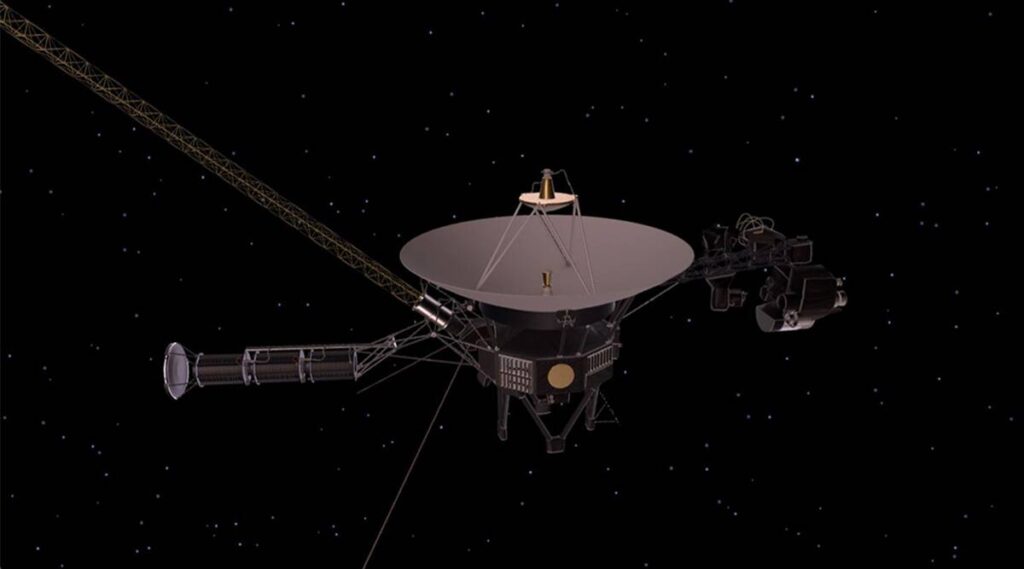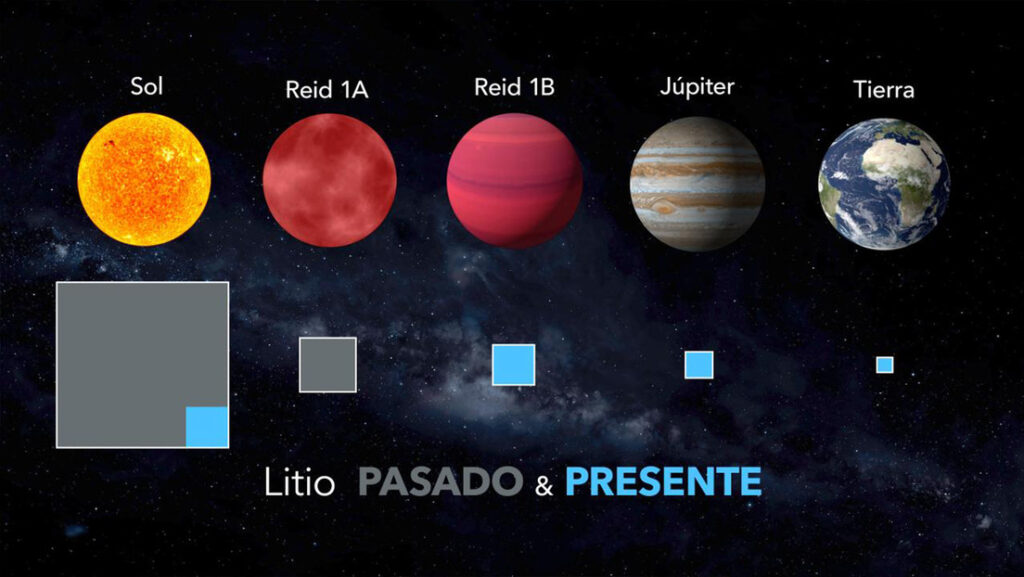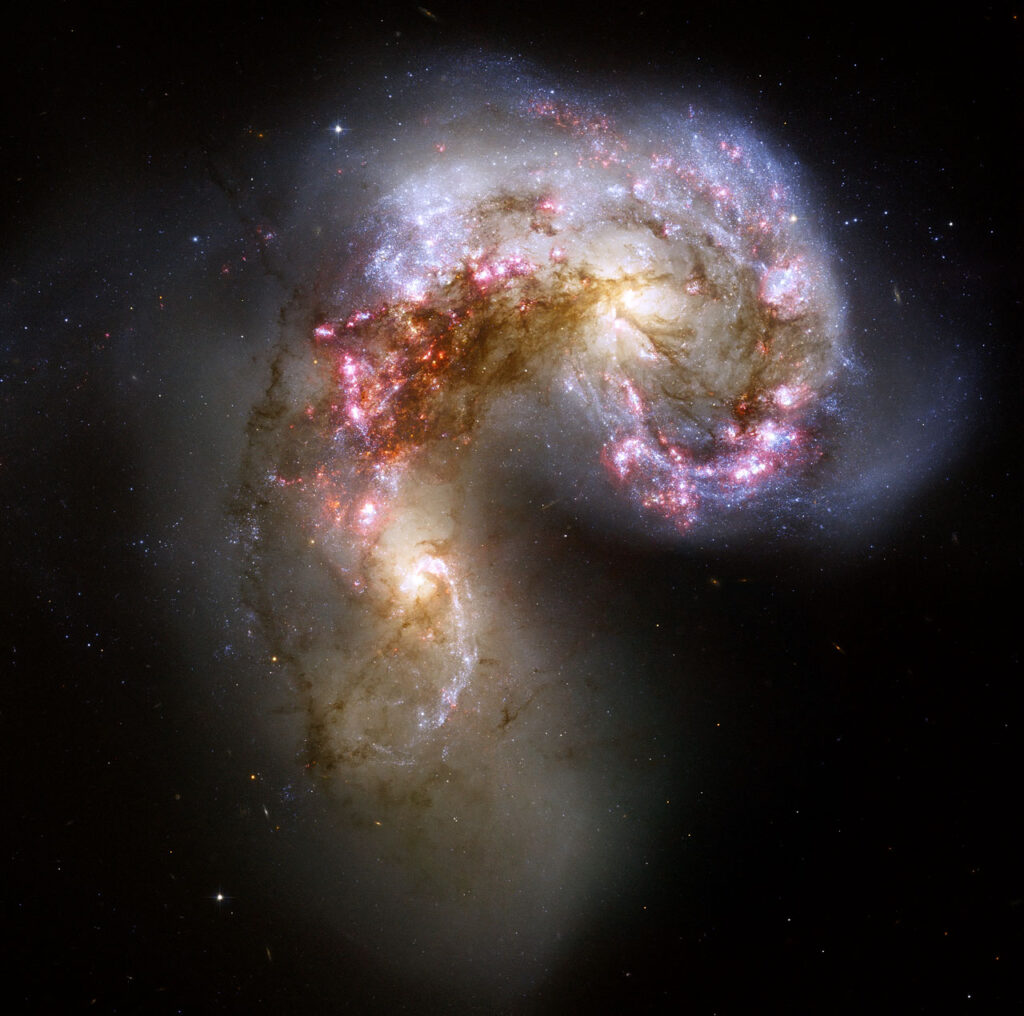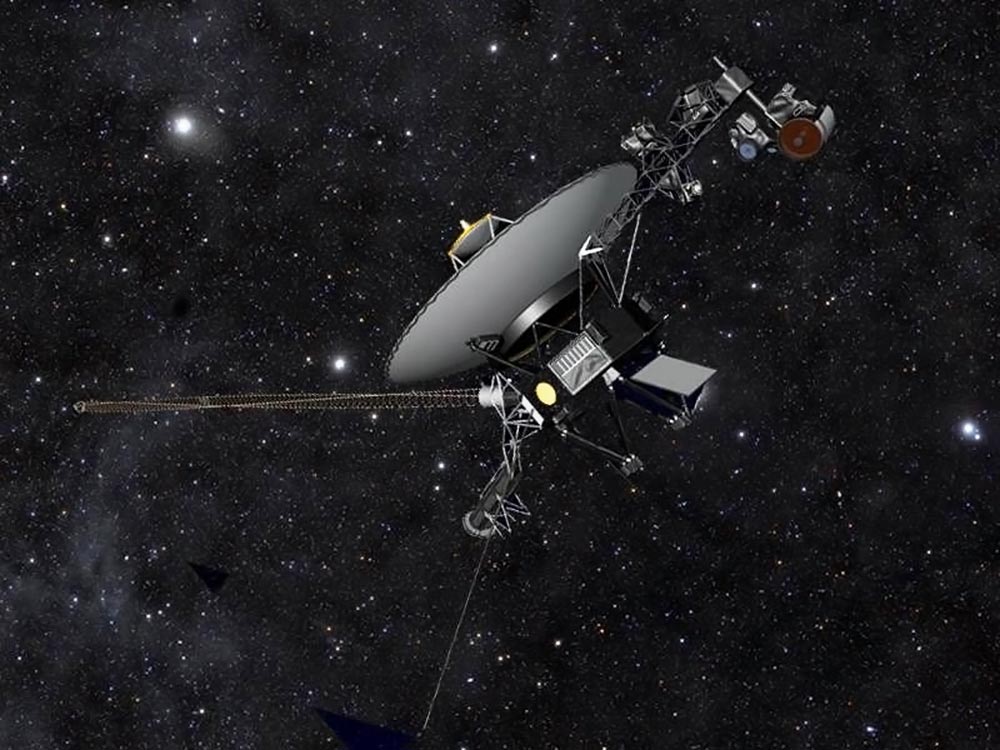Voyager 1, the farthest man-made object in space, seemed to be having a ‘data glitch’ error as it headed farther into interstellar space. NASA engineers were able to fix the issue and are now looking for the underlying cause.

NASA engineers have repaired a “data glitch” on the space agency’s Voyager 1 spacecraft. Earlier this year, Voyager 1’s attitude articulation and control system (AACS) that keeps the space probe’s antenna pointed at Earth began sending incoherent information about its activities and health to mission controllers. The spacecraft has been in operation for over 45 years.
“We’re happy to have the telemetry back. We’ll do a full memory readout of the AACS and look at everything it’s been doing. That will help us try to diagnose the problem that caused the telemetry issue in the first place. So we’re cautiously optimistic, but we still have more investigating to do,” said Suzanne Dodd, project manager for the Voyager program, in a press statement.
The issue with the AACS happened even as the rest of the probe appeared to be healthy, still gathering and returning scientific data. NASA teams found out that the probe was sending garbled information because it had started sending telemetry data through an onboard computer that had stopped working years ago. This defunct computer was corrupting the information.
According to NASA, Dodd tried a low-risk solution where the team would command the AACS to resume sending data to the right computer. Although the team doesn’t know why the AACS started routing the telemetry data, it is likely that the system received a faulty command generated by another onboard computer. But if that is true, it could mean that there is an issue with another part of the spacecraft. The team continues to search for that underlying issue but believes that it is not a threat to the long-term health of Voyager 1.
Voyager 1 and Voyager 2 have been exploring our solar system for 45 years. Both probes are now in interstellar space, the region outside the heliopause, or the bubble of energetic particles and magnetic fields from the Sun.
The Voyager mission’s origin can be traced back to the 1960s when NASA mission designers observed that the next alignment of outer planets would appear in the 1970s. This is an extremely rare event that happens about once every 175 years. Thankfully, at the time, technology was advanced enough to take advantage of this alignment to fly a spacecraft by Jupiter, Saturn, and the other outer planets.
Voyager 2 was the first to launch on August 20, 1977, followed by Voyager 1, which launched on September 5 the same year. But since then, Voyager 1 has outpaced Voyager 2. As both crafts began their journey into interstellar space, Voyager 1 became the most distant man-made object in space, which it continues to be today.
Recent Posts
- Astronomers detect first direct image of black hole expelling a powerful jet
- WhatsApp rolling out ‘reply with message’ feature within call notifications
- Multi-Device Pairing May Be Arriving for Apple Watch this Year
- Artificial Intelligence Discovers Hidden Giant, a Planet 5 Times Larger Than Jupiter
- Google CEO Sundar Pichai Talks Bard & The Future Of Search
Recent Comments

Astronomers detect first direct image of black hole expelling a powerful jet

Artificial Intelligence Discovers Hidden Giant, a Planet 5 Times Larger Than Jupiter

Scientists explain melting of Antarctic ice sheet dating back 9,000 years

An Unexpected Discovery: Hubble, ESA's Gaia Spot Double Quasar That Existed Over 10 Billion Years Ago

Astronomers detect first direct image of black hole expelling a powerful jet

WhatsApp rolling out ‘reply with message’ feature within call notifications

Multi-Device Pairing May Be Arriving for Apple Watch this Year


